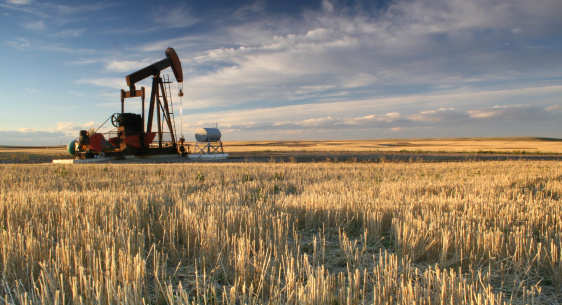
April 02
Indian oil refiners are investing Rs 30,000 crore for upgrading to BS VI technology- SSV Ramakumar, IOC
New Delhi: India has just launched the high efficiency BS VI grade of petrol and diesel in a bid to cut vehicular emissions. However, However, the improved fuel quality will have a marginal impact on emissions until the launch of the complimentary BS VI compliant automobile engines, SSV Ramakumar, Director-R&D at Indian Oil Corporation (IOC), the nation’s largest fuel retailer, said in an exclusive interview with Bilal Abdi. He also explains the key difference between BS IV and BS VI fuel and the changes carried out by Oil Marketing Companies (OMCs) for producing the greener fuel. Edited excerpts..
What is BS-VI fuel and what makes it advantageous over the earlier grades?
BS-VI is an ultra-clean fuel qualifying the stringent fuel quality parameters. The sulphur content in BS VI fuels has been reduced to 10 ppm from 50 ppm (in BS-IV). The lower sulphur in the fuel will permit the use of advanced after treatment devices (ATDs) used for reducing harmful exhaust emissions like CO, HC, NOx and Particulate Matter. With the use of these fuels, PM and HC emissions from heavy duty vehicles would reduce by 50 % and 65% respectively. The efficacy and durability of Diesel Particulate Filter (DPF) and Selective Catalytic Reduction (SCR) will increase with the use of BS VI fuels
In terms of vehicular emissions, what is the key difference between BS IV and BS VI fuel?
The lower sulphur content in the BS-VI fuel will facilitate use of after treatment devices to meet the tighter emission norms. The poly-aromatic hydrocarbons (PAH) in diesel fuel has been reduced to 8% in BS VI compared to 11% in BS IV (thus reducing carcinogenic emissions). BS VI fuels are going to significantly reduce the Greenhouse gas emissions especially the Carbon dioxide, unburnt hydrocarbons or methane and oxides of nitrogen. With Global Warming Potential (GWP) of 310, Oxides of nitrogen (NOx) are considered to be critical species in promoting the Global Warming. For heavy duty vehicles, the BS VI diesel would produce 89% lower NOx emissions and 50% lower PM emissions as compared to BS IV. This, coupled with 72% reduction in hydrocarbon emissions, will have a knock-down effect on CO2 emissions. For the gasoline passenger cars, 25% reduction would be achieved in NOx while diesel passenger cars would be emitting 68% and 82% lower NOx and PM emissions respectively. Further, BS VI norms propose stringent regulations on CH4 emissions for CNG vehicles and the latest CAFE (Corporate Average Fuel Economy) standards have been affected from April 2017 in order to limit CO2 .
What kind of technical changes does a refinery require to produce BS VI fuel which is comparatively cleaner than BS VI
In order to meet the stipulated fuel quality for BS-VI fuels, Indian refineries are undergoing major upgradation. Diesel hydro-treating units, which will ensure reduction of S-content to stipulated limits are being created (for Greenfield projects) or their capacity is being augmented. For meeting gasoline fuel quality, desulphurization technologies along with Octane boosting units are being installed or augmented.
How much investment did IOC and other refineries have to make in order to make this change?
The cost of producing BS VI grade fuels would be higher as compared to BS IV fuels. Indian refineries are in process of investing Rs 30,000 crores for upgrading the technologies from BS IV to VI. The Auto Fuel Vision Policy 2025 in June 2014 had recommended a 75 paise cess to recoup an additional investments projected for producing cleaner fuels.
What kind of emissions are expected if BS VI fuel is used in a BS VI engine?
Fuel quality and vehicle technology go hand-in- hand in realizing clean transport system. The use of BS VI fuel would enable vehicle manufacturers to incorporate advanced exhaust-gas after-treatment systems in their vehicles apart from engine technology improvements. Hence, the use of BS VI fuel in BS VI engines can provide significant reduction in exhaust emissions from both gasoline as well as diesel vehicles. BS VI fuel and BS VI engine combination can reduce emissions significantly compared to BS IV scenario. The expected emission reduction as notified in the emission standards for heavy duty vehicles are to the tune of 89% in Oxides of nitrogen (NOx) and 50% in Particulate matter (PM). In the two-wheeler segment, which is gasoline- powered, the expected emission reduction in NOx is about 88% and Carbon Monoxide(CO) is about 45%. Diesel cars are expected to emit 68% lower NOx and 82% lower PM emissions respectively.
What kind of emissions are expected if BS VI fuel is used in a BS IV engine?
Since the hardware remains same and the fuel is changed to BS VI, only marginal emission reduction is expected in BS IV engines. As the sulphur content as well as the PAH content goes down in the diesel fuel, the particulate matter (PM) emission from BS IV and older diesel vehicles are expected to decrease marginally. The in-house studies conducted at our R&D Centre have shown such a decrease (5% to 20% depending on vehicle vintage) in PM emissions from both passenger cars as well as commercial trucks. In the case of gasoline passenger cars, the BS VI gasoline has shown slight reduction in regulated emissions due to improved performance of catalytic converter with the use of ultra-low sulphur gasoline.






